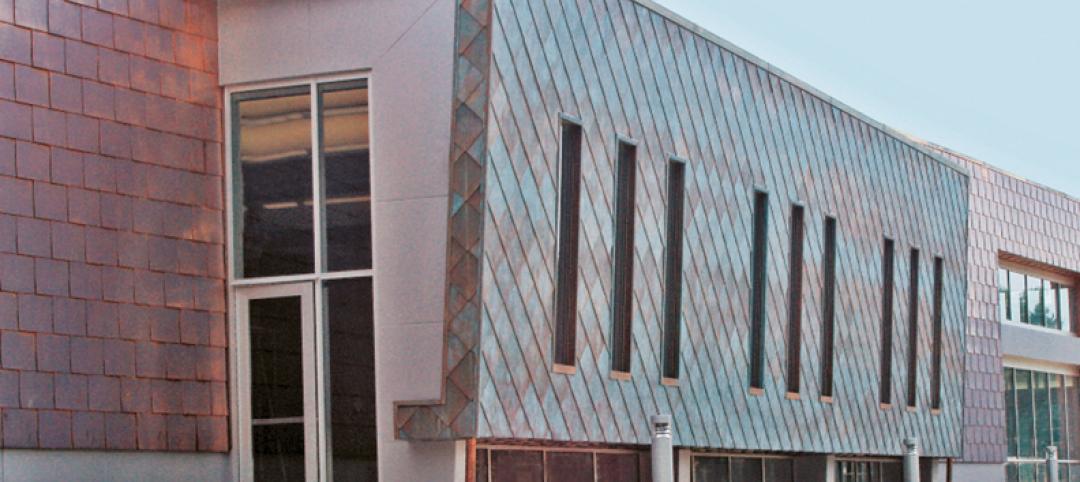The new Richland Two Institute of Innovation is a unique educational center supporting multigenerational learning. The facility is part of the Richland School District Two in Columbia, S.C., and is envisioned as a “fishbowl of learning” that weaves together spaces and programs for the school district as well as the community.
The Institute offers specialized classes for juniors and seniors from Richland Two’s five high schools, as well as provides comprehensive training and certification programs for adult learners throughout the area. The two-story, 245,000 sq. ft. building also offers community resources including a public library, public meeting rooms, shared auditorium, dining and conference areas as well as Richland Two’s District Office and training facilities.
The building can accommodate up to 800 people for workforce development classes and professional workshops. It was constructed as a design/build partnership between the architectural firm LS3P and M.B. Kahn Construction Co.
The highly contemporary design employs an inviting and colorful palette of materials including four different PAC-CLAD profiles in a variety of exterior and interior applications. The design team selected Petersen’s Reveal Panels as the primary exterior profile. The 22-gauge panels were finished in five complementary colors including Interstate Blue, Silver, Sierra Tan, Slate Gray and Almond.
The PAC-CLAD Reveal Panels were key to the overall design concept. “We wanted the building to have a high-tech, contemporary look but be economical,” said Mary Beth Branham, principal and LS3P’s Columbia office leader. “The district didn’t have a ton of money and needed to allocate available funds as smartly as possible. The PAC-CLAD panels were economical yet offered a nice blend of systems and profiles that could create the contemporary, industrial aesthetic we were going for. And the different colors of the metal panels allowed us to tie the exterior into the interior color scheme.”
The design team integrated the Reveal Panels on the front of the building with a simulated stone veneer, abundant glazing and four clerestories that introduce natural light and also serve as prominent design elements. The rear portion of the structure utilizes pre-cast concrete painted to match the differing colors of Petersen’s metal panels.
In addition to the PAC-CLAD Reveal Panels, three other Petersen profiles were blended into the design scheme. Approximately 10,000 sq. ft. of Tite-Loc Plus panels were used on four clerestory roof elements that help differentiate the main areas of the building. Also, 2,000 sq. ft. of Petersen’s Precision Series HWP panels provide accent areas under many of the windows on the rear portion of the building. PAC-CLAD Flush Panels were also used in various soffit applications.
Installation of all PAC-CLAD systems was done by Watts & Associates, Columbia. “This was a complex job,” said Scott Mathias, vice president and project manager. “LS3P was great to work with. The design team was very open to receiving ideas and suggestions for materials and products. We went to them with the Petersen option based on some of the challenges involved with using a single-skin product on the heights we were dealing with.”
The complexity of the installation was compounded by the use of four different types of metal panels in five different colors. “Determining the transitions between the colors required careful detailing where the various color panels tied in with each other. But again, that was mainly front-end stuff. We made samples to show everyone how we planned to do it and then everyone was on-board,” Mathias said. “Throughout the process, it was a total team effort. All of the players—including the school district—were totally committed to make sure we got it done and got it done right.”
Watts & Associates has a long relationship with Petersen. Scott Mathias was especially complimentary about the assistance he receives from the PAC-CLAD sales and technical support staff based out of Petersen’s Acworth, Ga., plant. “I can call those guys with any question on any job and they’ll find the answer for me. It doesn’t matter if a project is 180 feet in the air or on the ground, they’ll help out on the front end to make sure we’re covered on all aspects of the job. They’re good people with good products.”
Petersen manufactures PAC-CLAD metal cladding products in multiple gauges of steel and aluminum. PAC-CLAD products include standing-seam roof panels, hidden- and exposed-fastener wall panels, flush panels, soffit panels, perforated metal, fascia and coping systems, composite panels, column covers, coil and flat sheet. All are available in full 70% PVDF finish (Kynar) in 45 standard colors that include a 30-year finish warranty. Most colors meet LEED, Energy Star and Cool Roof Rating Council certification requirements. Founded in 1965, Petersen’s facilities are located in Illinois, Georgia, Texas, Maryland and Minnesota. For information on the complete line of Petersen metal products call 800-PAC-CLAD, visit pac-clad.com or write to info@pac-clad.com.
Related Stories
| Jun 1, 2012
AIA 2030 Commitment Program reports new results
The full report contains participating firm demographics, energy reduction initiatives undertaken by firms, anecdotal accounts, and lessons learned.
| May 31, 2012
Product Solutions June 2012
Curing agents; commercial faucets; wall-cladding systems.
| May 29, 2012
Reconstruction Awards Entry Information
Download a PDF of the Entry Information at the bottom of this page.
| May 24, 2012
2012 Reconstruction Awards Entry Form
Download a PDF of the Entry Form at the bottom of this page.
| Mar 22, 2012
Hawaiian architecture firm chooses FRP trellis system over traditional materials
MGA Architecture plans to add five more trellis systems on the neighboring building.
| Mar 22, 2012
Moline Public Library uses copper as an exterior building material
Architects incorporate decorative copper panels to create the look of a heavy plate copper shingle.
| Mar 13, 2012
Commercial glazer Harmon expanding into Texas
Company expanding into the Texas market with a new office in Dallas and a satellite facility in Austin.
| Mar 12, 2012
Improving the performance of existing commercial buildings: the chemistry of sustainable construction
Retrofitting our existing commercial buildings is one of the key steps to overcoming the economic and environmental challenges we face.
| Feb 2, 2012
Call for Entries: 2012 Building Team Awards. Deadline March 2, 2012
Winning projects will be featured in the May issue of BD+C.











